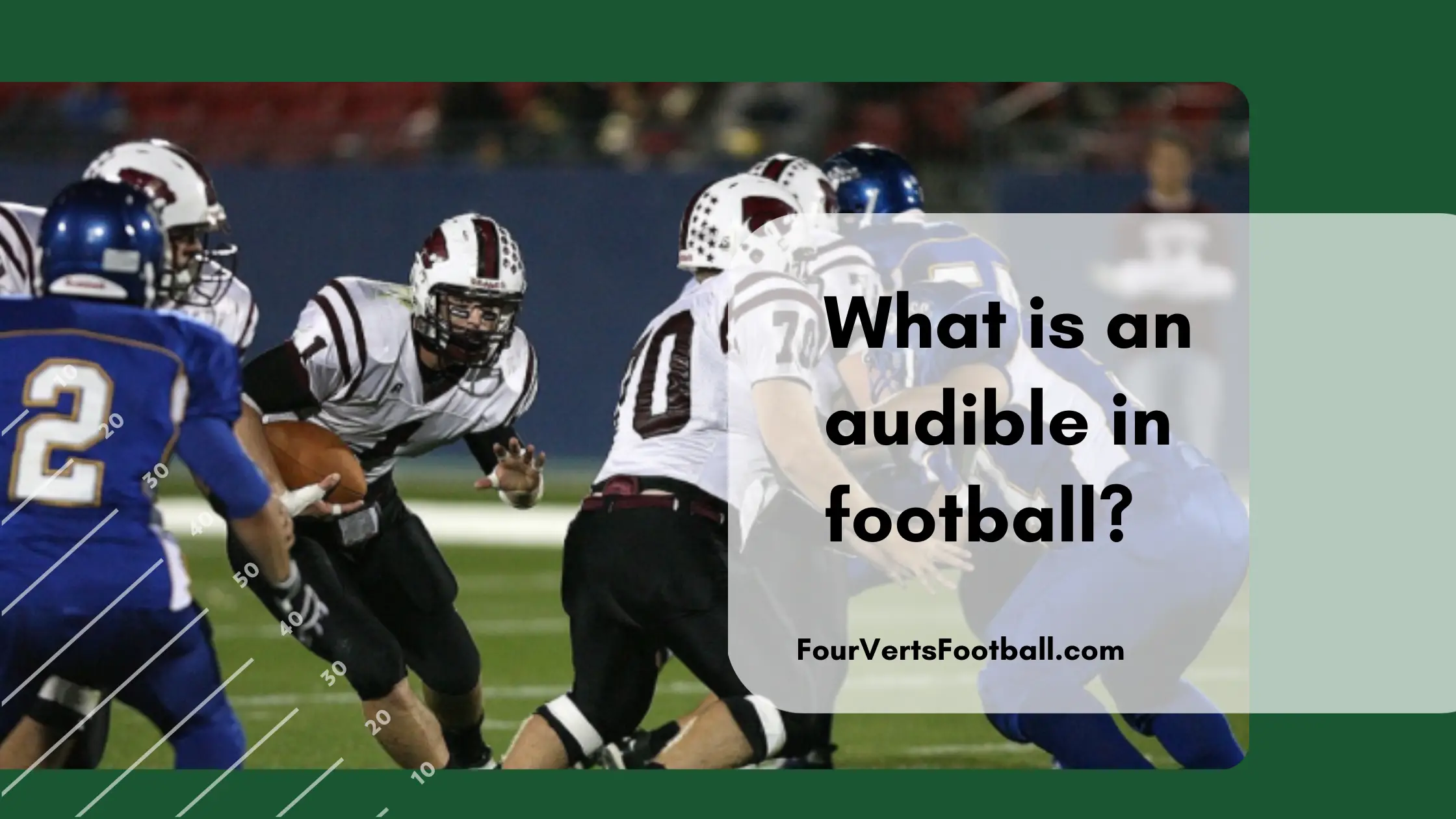An audible in football is a verbal signal used by the quarterback to modify the play based on what he is seeing from the defense. Audibles are made at the line of scrimmage after a team has already huddled and chosen their play.
These verbal cues from the quarterback to his teammates may change a receiver’s route, the pass protection scheme, or the play entirely.
How Do Audibles Work In Football?
To start a play the offensive team will form a huddle. The play chosen by the coaching staff will then be communicated to the quarterback.
The call will come via the speaker in his helmet and will not be changed unless the quarterback calls an audible.
The quarterback will tell his teammates the play in the huddle and then they will proceed to the line of scrimmage.
Once all the players are lined up the quarterback will have a chance to look at the defense.
If the quarterback determines that the defense’s setup will make it difficult to run their play he will call an audible.
Depending on what the quarterback is changing in the play the calling of an audible can look very different.
For some teams, the quarterback may yell a single word loud enough for all the players to hear. This single word can indicate the change to a different play.
Other audibles will have the quarterback running directly up to players and telling them instructions for the upcoming play. There is no exact process to calling an audible in football because almost all football teams do it differently.
Audibles are one reason you will hear quarterbacks yelling things like omaha or blue 80 green 80 before a play starts
What Do Teams Change When Calling An Audible?
An audible in football simply means a verbal cue to change the play, but what exactly are teams changing when they audible?
Below we will break down some of the most common uses of audibles in football.
Changing The Play Itself
The most common use of audibles in football is to change the whole play. When a quarterback comes to the line of scrimmage he may notice that the defense is perfectly set up to stop his play.
In these situations, it is best that the whole play is changed. On most occasions, teams will have some set plays they can audible to.
With a verbal cue, the quarterback can tell his players what play they are switching to. The new play will offer the offense a more favourable setup against the formation of the defense.
Seeing the setup of the defense can tell you a lot about what is coming your way. This is why you will often see coaches call timeouts after seeing how a defense lines up against their offense on a big play.
Hot Route
Another common outcome of an audible in football is a hot route. Hot routes are primarily called when a team is about to face pressure from the defense.
A hot route in football is a short route that is run by a receiver so that the quarterback has an easy option to throw to.
When the quarterback notices he might be under pressure on the coming play he may call one of his receivers to run a hot route. The quarterback and receiver will determine what short route they want to use before the ball is snapped.
If the quarterback finds himself about to be sacked he can quickly throw the ball to his hot route receiver.
Pass Protection Responsibilities
One more option used by the offense when calling an audible is assigning players to pass protection.
One thing quarterbacks are often able to identify from the line of scrimmage is an incoming blitz.
If the quarterback knows a blitz is coming he may want to get more players in pass protection. The offensive line is already going to be in pass protection which means it is usually the running back that is being told to change his responsibilities for the play.
Instead of running a route the running back will stay in the pocket and block defenders that manage to make it past the offensive line.
That is all on audibles in football read on about snap counts or silent counts to learn more about what quarterbacks are saying before a play starts,

